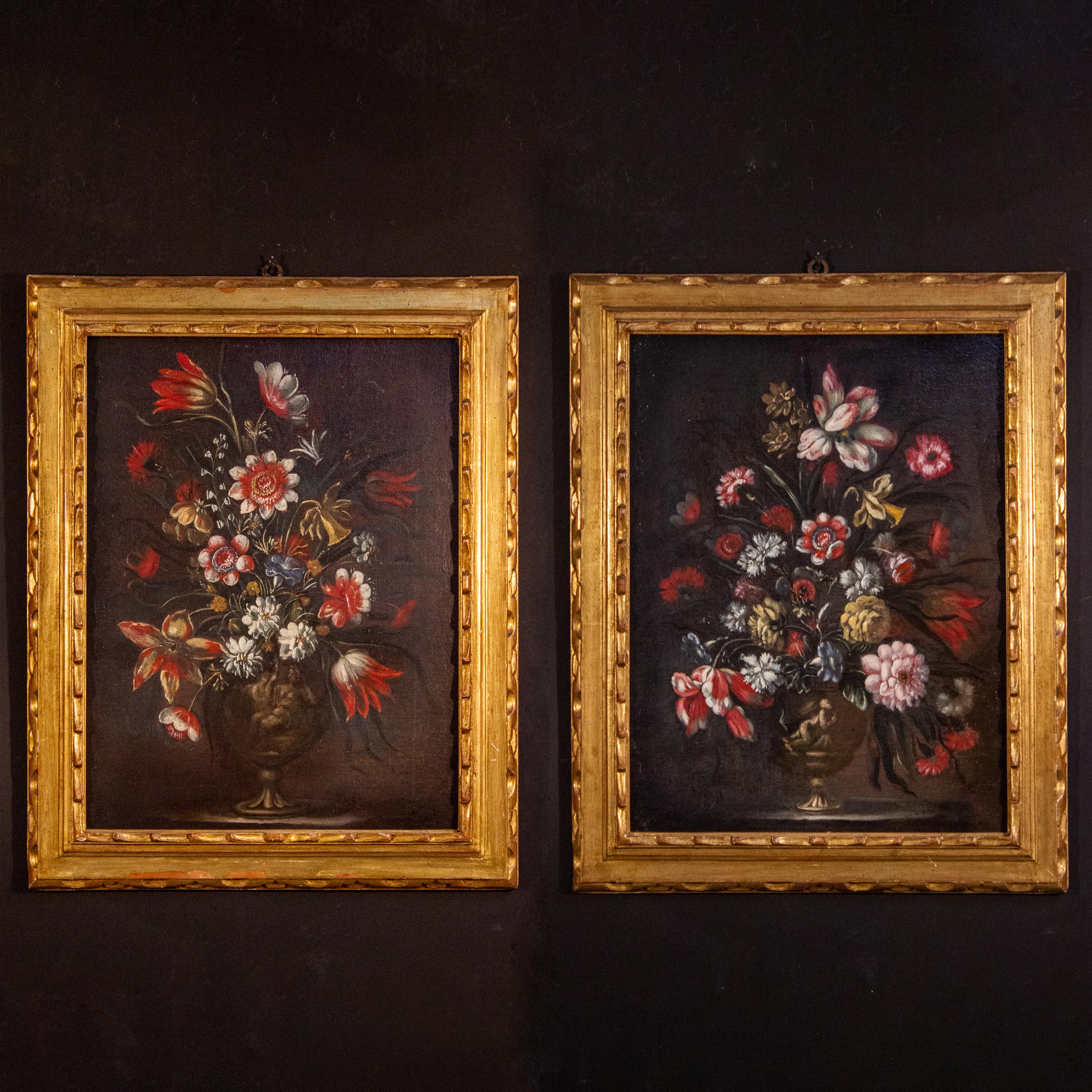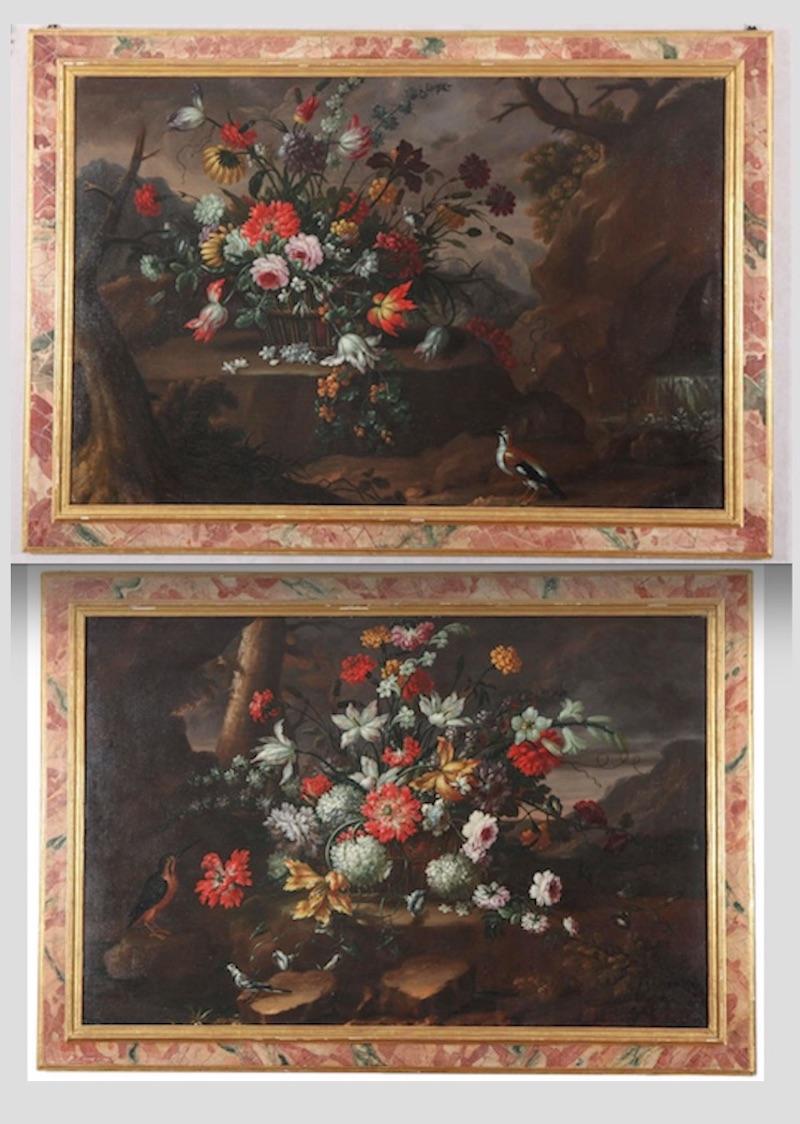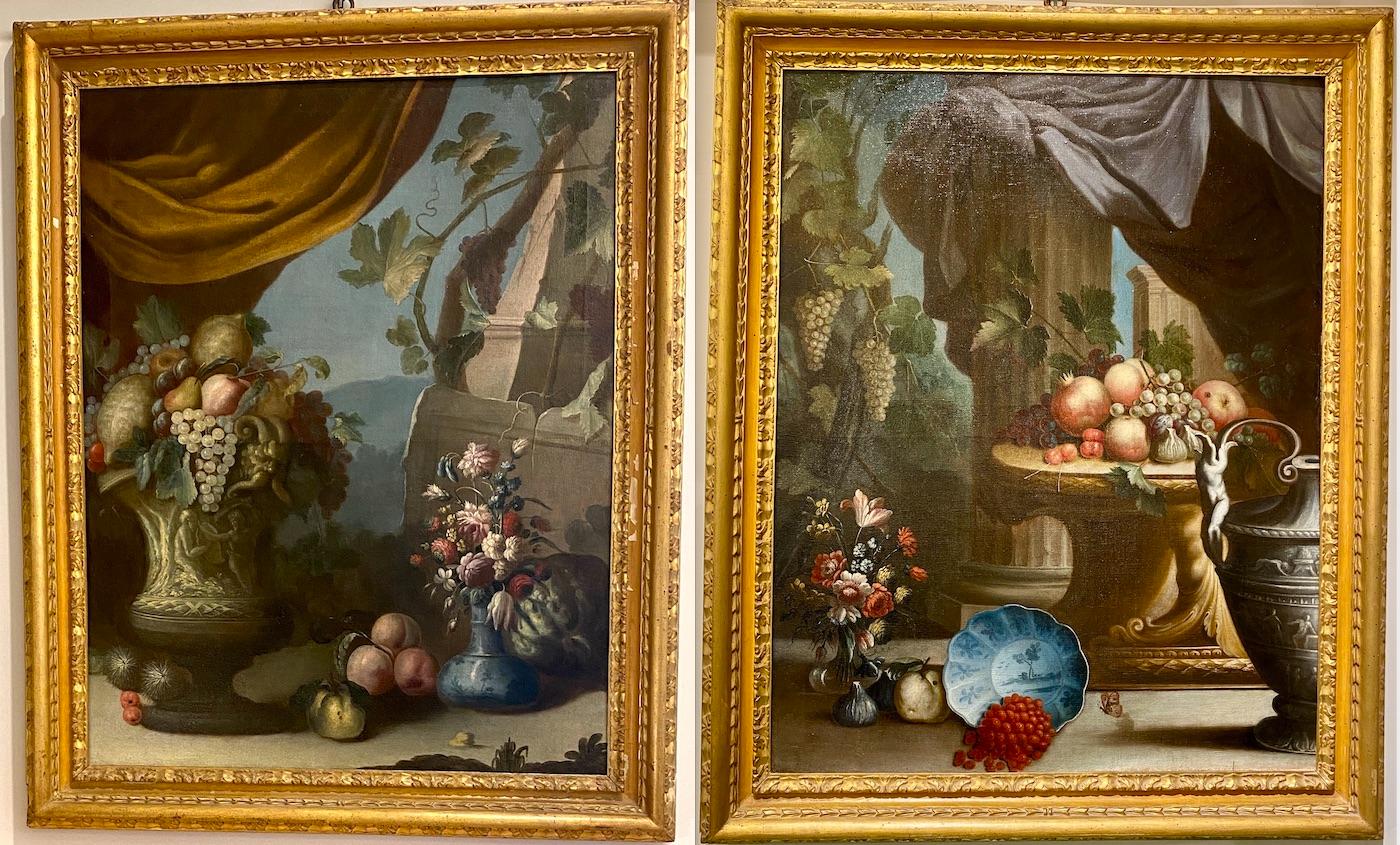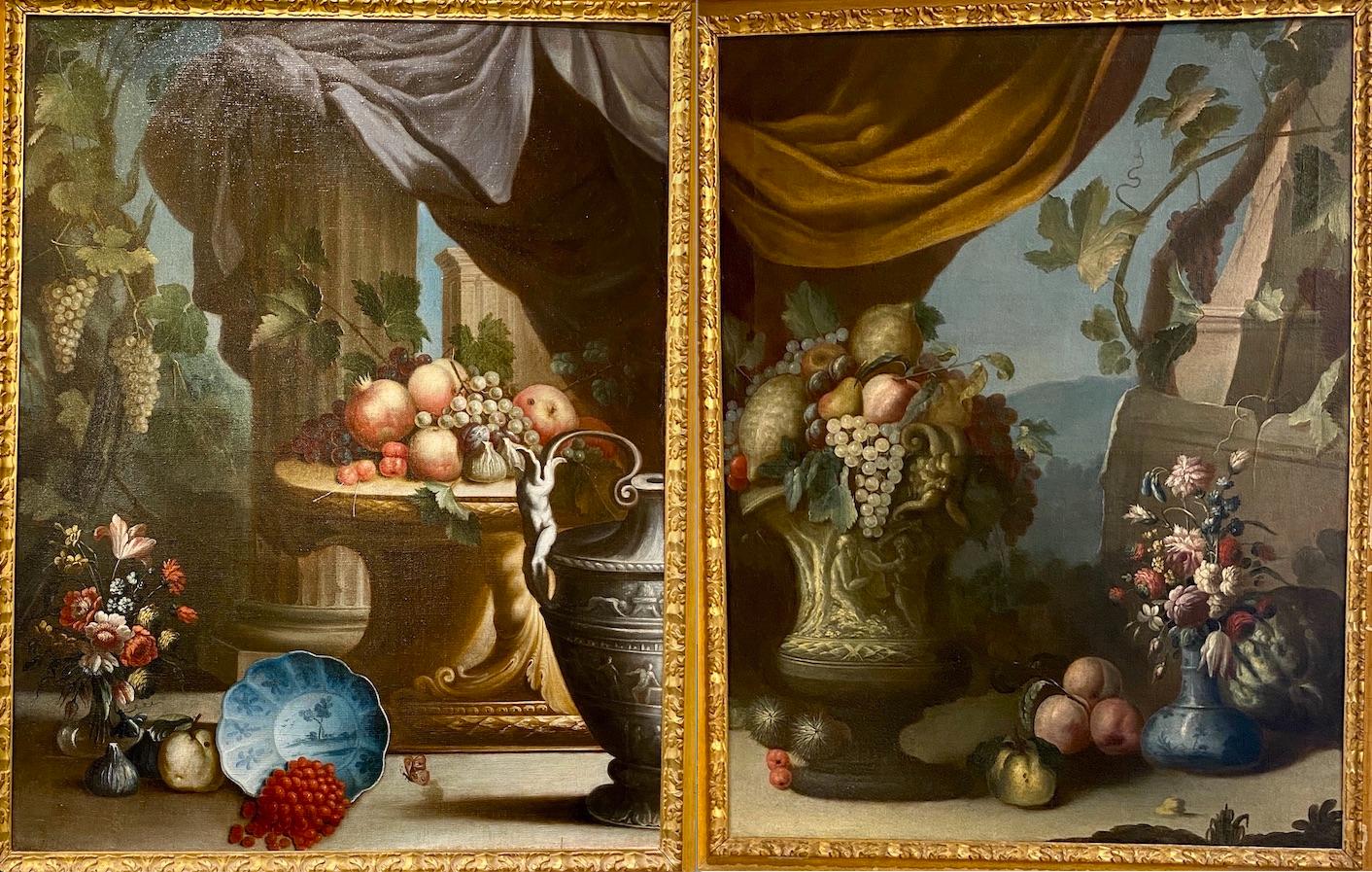Items Similar to Tea or Coffee - Mid 20th Century English Still Life Oil on Board Painting
Want more images or videos?
Request additional images or videos from the seller
1 of 12
Edward Albert HicklingTea or Coffee - Mid 20th Century English Still Life Oil on Board Paintingc.1960
c.1960
About the Item
A very beautiful 1960's oil on board still life titled ''Tea or Coffee'' by Edward Albert Hickling. The table has been laid for afternoon biscuits with a choice of tea and coffee pots.
Excellent quality still life which is a leading example of the artist's work. Signed lower right and presented in a very good quality gilt frame.
Artist: Edward Albert Hickling (English, 1913-1998)
Title: Tea or Coffee
Medium: Oil on board
Size: 24 x 28 inches (61 x 71 cm) including the frame
Edward Albert Hickling was a painter and technical illustrator. He was born in Nottingham, where he attended the College of Art from 1927-39 under Arthur Spooner.
Hickling showed at the RA, ROI, RSMA and RP amongst others. A member of the Sketching Club in Derby, he lived most of his life in Breaston, Derbyshire.
- Creator:Edward Albert Hickling (1913 - 1998, British)
- Creation Year:c.1960
- Dimensions:Height: 24.02 in (61 cm)Width: 27.96 in (71 cm)
- Medium:
- Period:
- Condition:
- Gallery Location:Sevenoaks, GB
- Reference Number:1stDibs: LU1955214106702
About the Seller
5.0
Platinum Seller
These expertly vetted sellers are 1stDibs' most experienced sellers and are rated highest by our customers.
Established in 2016
1stDibs seller since 2022
64 sales on 1stDibs
Typical response time: <1 hour
- ShippingRetrieving quote...Ships From: Sevenoaks, United Kingdom
- Return PolicyA return for this item may be initiated within 3 days of delivery.
More From This SellerView All
- Still Life - Fruit, Book & Tankard Fine Classical Dutch Oil on Canvas PaintingLocated in Sevenoaks, GBThis beautiful oil on canvas still life by Dutch artist Eduard Peter Moleveld depicts fruits, a tankard and open book on a table. A whole and half sliced orange sit within a Delft b...Category
1970s Still-life Paintings
MaterialsCanvas, Oil
- Roses in a Jug - 1920's French Impressionist Antique Still Life Oil PaintingLocated in Sevenoaks, GBA beautiful 1920's French impressionist oil on board interior still life with yellow roses in a jug. Excellent quality work with lots of detail including a painting on the wall and m...Category
Early 20th Century Impressionist Still-life Paintings
MaterialsOil, Board
- Still Life with Plant & Kettle - Large French Impressionist Kitchen Oil PaintingLocated in Sevenoaks, GBA very beautiful large French impressionist oil on canvas still life depicting a plant and brass kettle, probably in a kitchen. The work is very well painted and atmospheric on a gen...Category
1920s Impressionist Still-life Paintings
MaterialsOil, Canvas
- Roses & Wildflowers - 20th Century Italian Impressionist Still Life Oil PaintingLocated in Sevenoaks, GBA beautiful 1930's impressionist oil on board depicting roses and wildflowers in a vase by Italian painter Carlo Marzorati. Excellent quality work which is in very good original con...Category
Early 20th Century Impressionist Still-life Paintings
MaterialsOil, Board
- Cafetiere Blanche - Mid 20th Century Cubist Modernist Oil on Board PaintingLocated in Sevenoaks, GBA beautiful signed and dated 1957 French cubist oil on board depicting a white coffee pot and cup of coffee. Presented in its original fabric and gilt wood frame. A lovely original ...Category
1950s Cubist Still-life Paintings
MaterialsOil, Board
- Chrysanthemums in a Green Pot - Modern British Flowers Still Life Oil PaintingLocated in Sevenoaks, GBA beautiful large signed and dated 1940 modern British oil on canvas by Patricia Fell-Clark, the painter and novelist known for introducing the Beatles to Ravi Shankar. The work dep...Category
1940s Modern Still-life Paintings
MaterialsCanvas, Oil
You May Also Like
- Pair of 18th century Italian Still Life Paintings of FlowersLocated in Rome, ITPair of very decorative Italian Still-life paintings of flowers with vases and classical figures . 18th century, oil on canvas, with original gilt-wood frames. This pair is an exce...Category
18th Century Baroque Still-life Paintings
MaterialsOil
- Still Life with Squash, Gourds, Stoneware, and a Basket with Fruit and CheeseLocated in New York, NYProvenance: Selma Herringman, New York, ca. 1955-2013; thence by descent to: Private Collection, New York, 2013-2020 This seventeenth century Spanish still-life of a laden table, known as a bodegón, stands out for its dramatic lighting and for the detailed description of each object. The artist’s confident use of chiaroscuro enables the sliced-open squash in the left foreground to appear as if emerging out of the darkness and projecting towards the viewer. The light source emanates from the upper left, illuminating the array, and its strength is made apparent by the reflections on the pitcher, pot, and the fruit in the basket. Visible brush strokes accentuate the vegetables’ rough surfaces and delicate interiors. Although the painter of this striking work remains unknown, it is a characteristic example of the pioneering Spanish still-lifes of the baroque period, which brought inanimate objects alive on canvas. In our painting, the knife and the large yellow squash boldly protrude off the table. Balancing objects on the edge of a table was a clever way for still-life painters to emphasize the three-dimensionality of the objects depicted, as well a way to lend a sense of drama to an otherwise static image. The knife here teeters on the edge, appearing as if it might fall off the table and out of the painting at any moment. The shape and consistency of the squash at left is brilliantly conveyed through the light brush strokes that define the vegetable’s fleshy and feathery interior. The smaller gourds—gathered together in a pile—are shrouded partly in darkness and stand out for their rugged, bumpy exterior. The stoneware has a brassy glaze, and the earthy tones of the vessels are carefully modulated by their interaction with the light and shadow that falls across them. The artist has cleverly arranged the still-life in a V-shaped composition, with a triangular slice of cheese standing upright, serving as its pinnacle. Independent still-lifes only became an important pictorial genre in the first years of the seventeenth century. In Italy, and particularly through the revolutionary works of Caravaggio, painted objects became carriers of meaning, and their depiction and arrangement the province of serious artistic scrutiny. Caravaggio famously asserted that it was equally difficult to paint a still-life as it was to paint figures, and the elevation of this new art form would have profound consequences to the present day. In Spain Juan Sanchez Cotan...Category
17th Century Old Masters Still-life Paintings
MaterialsCanvas, Oil
- Pair of Exceptional Italian Still Life Paintings of Flowers 18th centuryBy Anna Caterina GilliLocated in Rome, IT- ANNA CATERINA GILLI or GILLI Anna Caterina Turin 1729- 1751 Her paintings recorded in Turin as a decorative artist for the Royal Palace and the Stupinigi, working in a simil...Category
Mid-18th Century Baroque Still-life Paintings
MaterialsOil
- Pair of Exceptional Italian 18th Century Still-Life PaintingsLocated in Rome, ITThis pair of excellent Italian still life oil on canvas with flowers and fruit with classical ruins on the background and colored drapes create harmony of the composition. Notable ...Category
Early 18th Century Old Masters Still-life Paintings
MaterialsOil
- Pair of 18th century Italian Still Life Paintings of FlowersLocated in Rome, ITPair of very decorative Italian Still-life paintings of flowers with vases and classical figures . 18th century, oil on canvas, with original gilt-wood frames. This pair is an exce...Category
18th Century Baroque Still-life Paintings
MaterialsOil
- Pair of Exceptional Italian 18th Century Still-Life PaintingsLocated in Rome, ITThis pair of excellent Italian still life oil on canvas with flowers and fruit with classical ruins on the background and colored drapes create harmony of the composition. Notable ...Category
Early 18th Century Old Masters Still-life Paintings
MaterialsOil





